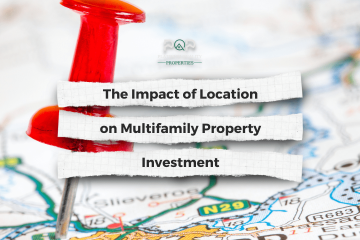Speakers at the NMHC Annual Meeting predict continuous growth for the sector.
The multifamily industry gathered in Orlando this week with expectations that its strong fundamental performance will continue, but the market nonetheless is preparing for challenges that include rising interest rates, a national labor shortage, evolving migration patterns and changes in renter preferences.
Multifamily is coming off a year with the highest asking rent increases ever, due to extremely strong demand that lifted occupancy rates near all-time highs. Although growth is expected to moderate in 2022, speakers at the National Multifamily Housing Council’s Annual Meeting anticipate that strong demand will continue, driven by robust economic growth, healthy consumer balance sheets, pent-up demand from the pandemic, and the long-term shortage of housing.
Richard Barkham, global chief economist and global head of research for CBRE, said he expects GDP to increase by 4 percent to 4.5 percent in 2022, driven by robust spending by consumers and businesses. However, he said inflation will remain high before settling down into the 2.5 to 3 percent range. The fear of an inflationary spiral is prompting the Federal Reserve to increase policy rates and sell off some of its bond holdings.
Labor Shortages, Rising Wages
Barkham said the increase in interest rates “is a sign of success, a sign of recovery in the economy.” However, he said there are headwinds that include inflation, rising rates, the labor shortage that has driven wage growth, and a potential economic slowdown in China and emerging markets.
Barkham said that the decline in immigration in recent years means that the U.S. will have two million fewer workers than was projected in the past. “If trends continue, the U.S. labor force will shrink for the first time in generations,” he said, noting that the drop would put a crimp on future economic growth. The tight labor market has produced 20-year high wage growth, with the average wage rising about 5 percent in 2021. “Do we have enough labor to keep up the robust economy?” asked Mike Clow, an executive managing editor of global property management at Greystar, who spoke on another panel.
If the Fed doesn’t navigate the increase in rates successfully, consequences for the economy could be disastrous. If inflation continues to rise the Fed might decide to take steps to choke off growth which could lead to a recession.
Rising wages have played a role in the apartment market, providing households with the ability to pay for the 13.5 percent increase in U.S. apartment asking rents in 2021, according to Yardi Matrix data. A big part of rising rents is the rent growth in luxury apartments. Rents at luxury Lifestyle units in the U.S. rose by 15.9 percent in 2021, compared to 11.0 percent growth for Renter-by-Necessity units, per Matrix.
Renters have more to spend on housing for many reasons, including government stimulus, higher wages, and increased savings during the pandemic. “We’ve never seen income growth like this for incoming apartment renters,” said Jay Parsons, deputy chief economist at RealPage.
Renter Migration
Another factor in rent growth is the migration of renters to secondary and tertiary markets that was exacerbated during the pandemic. Renters that moved to less expensive markets were able to pay more for rent because it seemed relatively cheap compared to the higher-rent markets they moved from. Because of the wave of population growth, asking rents in 2021 rose by 20 percent or more in many markets in the Sunbelt and Southwest, despite large increases in apartment deliveries in those metros.
Migration is closely related to trends in work-from-home. Return to offices has been delayed as new variants of COVID-19 continue to emerge, disrupting corporate plans and making it difficult to develop permanent policies. Yardi Matrix vice president Jeff Adler said it will take another couple of years before workplace issues shake out.
Adler said the pandemic exacerbated existing migration trends. He said population will continue to shift from urban to suburban submarkets within the same metro and shift from high-cost gateway markets to secondary and tertiary markets with lower cost of living and appealing lifestyle amenities. As people continue to seek urban-style amenities such as restaurants and entertainment, secondary metros and outer-ring suburbs are developing “urbanized nodes” that appeal to renters, he said.
Speaking on a different panel, John Affleck, senior vice president at John Burns Real Estate Consulting, agreed. “What we’re seeing today is a strategic location change from people who realize they are not going back to the office anytime soon,” he said.
The growth outside of gateway markets is having a huge impact on investment strategies. Ned Striker, senior managing partner of investments and capital markets at Cortland, said that over the last decade institutional investors have become more comfortable with secondary and tertiary markets that they would have avoided in the past because they were too small and illiquid. “We think that a lot of markets that were not institutional will move into the permanent institutional phase,” he said.
Apartment owners also must contend with changes in technology and renter preferences. A survey of 221,000 renters released this week by the NMHC found that renters want more space, amenities such as washer/dryers, air conditioning, soundproof walls, and high-speed Internet access.
“The pandemic caused many renters to reevaluate their housing priorities, with a striking example being one-quarter of all moves we tracked were specific to changes in teleworking,” said Sarah Yaussi, the NMHC’s vice president of business strategy. “Whether it’s digital nomads looking to join a flexible membership club, pet amenities dog owners won’t rent without or the insatiable appetite for more packages, the NMHC/Grace Hill Renter Preferences Survey reveals all that has changed since 2019. And what we’ve seen overall are renters reporting a great desire for more space, better amenities and in-home creature comforts.”
*This piece was written by Paul Fiorilla through the Multi-Housing News website.




